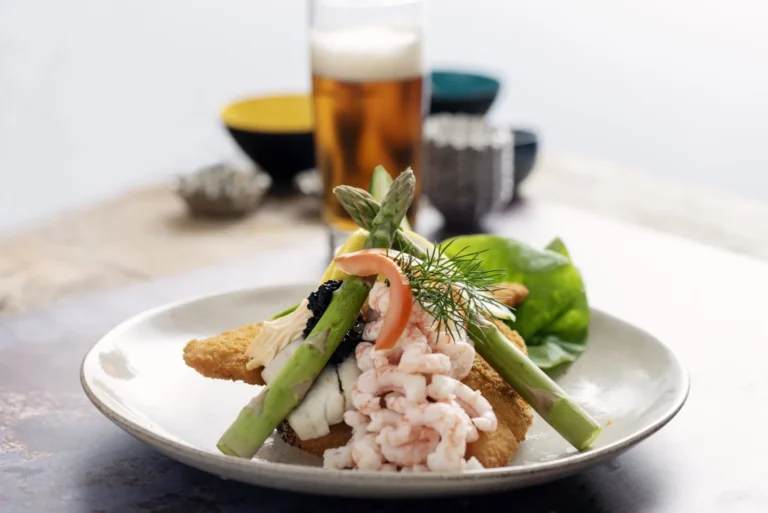Introduction: Danish cuisine
Danish cuisine is known for its simplicity, freshness and hearty flavors. It is heavily influenced by the country’s geography and climate, with an abundance of seafood, game, dairy products, and vegetables. Traditionally, Danish food is enjoyed in a comfortable, cozy atmosphere, often with friends and family. Danish cuisine has been evolving over the years, and today, it is a blend of traditional and modern influences.
Traditional Danish dishes
Danish cuisine has a strong tradition of preserving food, which is reflected in many of its classic dishes. Smørrebrød is an open-faced sandwich made with rye bread, butter, and various toppings, such as pickled herring, roast beef, or smoked salmon. Frikadeller, also known as Danish meatballs, are made from minced pork or beef and served with potatoes and gravy. Flæskesteg is roast pork with crackling, often served with red cabbage and potatoes. Other popular traditional dishes include stegt flæsk med persillesovs (fried pork belly with parsley sauce) and Æbleskiver (apple dumplings).
Regional variations in Danish cuisine
Denmark has many different regions, and each has its own culinary traditions. In the south, you’ll find dishes that are heavily influenced by German cuisine, such as schnitzel and sauerkraut. In the west, there is a strong focus on seafood, with popular dishes like fish cakes and pickled herring. The east is known for its smoked fish, while the north is famous for its hearty meat dishes, such as the traditional dish, “Julefrokost.”
Influence of foreign cuisine on Danish dishes
Over time, Danish cuisine has been influenced by various foreign cuisines, such as French, Italian, and Asian. For example, Danish chefs have incorporated French techniques into their cooking, resulting in dishes like “Tournedos Rossini” – beef tenderloin topped with foie gras and truffle sauce. Asian cuisine has also had an impact on Danish cuisine, with sushi and Thai food becoming increasingly popular.
Popular dishes in Danish restaurants
Many Danish restaurants offer a mix of traditional and modern dishes. Some of the most popular dishes include “Smørrebrød” – open-faced sandwiches with various toppings, “Gravad Laks” – cured salmon served with dill sauce, and “Stegt Flæsk” – fried pork belly with parsley sauce. Danish chefs also experiment with new flavors and ingredients, resulting in unique dishes like “Deep-fried pork belly with apple and mustard sauce.”
Exploring Danish street food
Street food has become increasingly popular in Denmark in recent years, with food trucks and stalls popping up in cities across the country. Some popular street food dishes include “Polser” – Danish hot dogs, “Frikadeller” – Danish meatballs, and “Copenhagen Smørrebrød” – open-faced sandwiches with various toppings. Danish street food also offers international cuisine, such as Thai food and Mexican tacos.
Signature dishes in Danish cuisine
While there are many traditional dishes in Danish cuisine, there is no one signature dish that represents the country’s cuisine. However, “Smørrebrød” is often considered the most iconic Danish dish, with its endless variations of toppings and creative presentations. Other classic dishes like “Frikadeller” and “Flæskesteg” are also considered staples of Danish cuisine.
Conclusion: Danish cuisine is diverse
Danish cuisine is a mix of traditional and modern influences, with dishes that reflect the country’s geography and climate. From the classic “Smørrebrød” to the street food scene, Danish cuisine is diverse and constantly evolving. Whether you’re looking for a hearty meal or a modern twist on traditional dishes, there is something for everyone in Danish cuisine.

